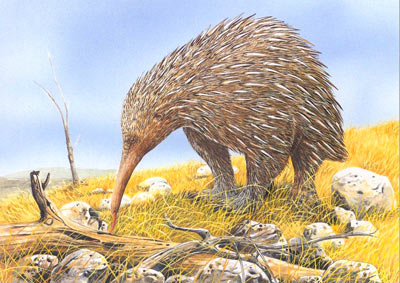Zaglossus hacketti is an extinct species of the long-beaked echidna from Western Australia that is dated from the Pleistocene. It is known only from a few bones found in Western Australia. It was the size of a sheep, weighing probably up to 100 kg (220 lb). This makes it the largest monotreme to have ever lived. Due to the lack of cranial material, placement of Z. hacketti into the modern long-beaked echidna genus Zaglossus is uncertain.
Era:
Upper Pleistocene (From two million to 11 thousand years ago; extensive glaciation of the northern hemisphere; the time of human evolution).
Classification:
The giant echidna was a marsupial mammal, a monotreme. Zaglossus hacketti is known from just a few bones.
Description:
The giant echidna stood more erect than the echidna we see today. It had a long snout that curved downwards and it was about three times larger than the modern echidna. At a metre long, it was huge not only for an echidna but for monotremes in general.
Distribution:
The giant echidna lived all over Australia about 3 million years ago; until about 20,000 years ago they were still alive in Tasmania.
What did it eat ?
The giant echidna ate termites, worms, grubs and beetles.
How did it protect itself ?
The giant echidna could form itself into a spiny ball to protect itself.

